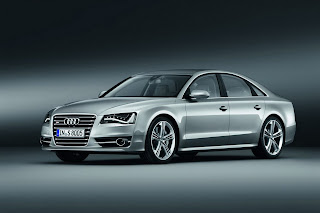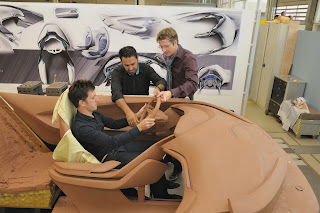The force-fed eight-cylinder motor generates an output of 420-horsepower and a peak torque of 550 Nm (405.7 lb-ft), allowing the S7 to complete the 0-100km/h (62mph) sprint in 4.9 seconds and reach an electronically limited top speed of 250km/h (155mph).
The V8, which uses the German firm's “cylinder on demand” technology under part load, consumes on average an estimated 9.7 liters of fuel per 100 km (equal to 24.3mpg US).
A seven-speed S tronic dual clutch transmission and Audi's quattro permanent all-wheel drive system with a self-locking center differential and torque vectoring, transfer power to the ground.
There's also an optional sport differential that distributes the power in variable proportions between the rear wheels.
The S7 Sportback features an adaptive air suspension sport and the Audi drive select dynamics system, while braking is provided by large, internally ventilated disc brakes front and rear. Those willing to dig deep into their pockets can opt for the carbon fiber-ceramic discs.
The exterior changes are fairly subtle and include bespoke front grille and bumper designs, side sills, a different rear bumper that houses a diffuser and quad tail pipes plus 19-inch or optionally, 20-inch wheels.
As for the cabin, the S7 is fitted with sport seats dressed in combination of Pearl Nappa leather and Alcantara (a full leather treatment is optional), a three spoke steering wheel and unique decorative trim.
Audi said first deliveries of the S7 Sportback are scheduled to begin in spring of 2012.






















































































